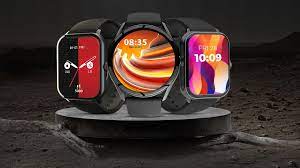Wearable technology has seen remarkable advancements in recent years, evolving far beyond its initial role as mere fitness trackers. These innovative devices have transformed how we interact with technology, bridging the gap between humans and machines in unprecedented ways.
1. Introduction to Wearable Technology
Wearable technology refers to electronic devices that can be worn on the body as accessories or embedded in clothing. These devices typically incorporate advanced features such as sensors, connectivity, and computing capabilities to perform various functions.
2. Evolution of Wearable Tech
Initially, wearable technology gained popularity with fitness trackers designed to monitor physical activity, sleep patterns, and other health-related metrics. However, as technology progressed, these devices evolved into multifunctional gadgets offering a wide range of capabilities.
3. Current Applications Beyond Fitness Tracking
– Healthcare Monitoring
Wearable devices are increasingly used in healthcare for real-time monitoring of vital signs, chronic disease management, and remote patient care. These devices provide healthcare professionals with valuable data to track patients’ health status and intervene promptly when necessary.
– Enhanced Communication
Modern wearable technology enables seamless communication through features like voice commands, text messaging, and video calls. Whether it’s smartwatches or smart glasses, these devices facilitate instant connectivity, enhancing communication efficiency in various contexts.
– Virtual and Augmented Reality Integration
The integration of wearable technology with virtual and augmented reality opens up new possibilities in entertainment, education, and professional fields. Wearable AR glasses, for instance, overlay digital information onto the user’s physical environment, offering immersive experiences and practical applications.
4. The Future of Wearable Tech
– Miniaturization and Integration
Future wearable devices are expected to become smaller, lighter, and more discreet, seamlessly integrating into everyday life. From smart clothing with embedded sensors to wearable implants, advancements in miniaturization will enable greater convenience and user acceptance.
– AI and Machine Learning Integration
The incorporation of artificial intelligence (AI) and machine learning algorithms will empower wearable devices to deliver personalized experiences and predictive insights. These technologies will analyze vast amounts of data collected from sensors to provide tailored recommendations for health, productivity, and lifestyle management.
– Personalized Health Insights
Wearable technology will play a significant role in preventive healthcare by providing personalized insights into individuals’ health and well-being. From early detection of health issues to proactive lifestyle adjustments, these insights will empower users to take proactive steps towards better health outcomes.
5. Challenges and Concerns
Despite the promising prospects, the widespread adoption of wearable technology poses certain challenges and concerns.
– Privacy and Data Security
Collecting and analyzing sensitive health data raise privacy concerns regarding data ownership, consent, and protection against unauthorized access. Safeguarding users’ personal information will be crucial to maintaining trust and compliance with regulatory standards.
– Health and Safety Risks
Prolonged use of wearable devices, particularly those with electromagnetic components or biometric sensors, may pose health risks such as radiation exposure or skin irritation. Manufacturers must prioritize user safety through rigorous testing and adherence to safety guidelines.
6. The Impact of Wearable Technology on Society
– Workforce Productivity
Wearable technology can enhance workforce productivity by providing real-time data and facilitating hands-free interaction in various industries. From logistics to healthcare, these devices streamline operations and empower employees to perform tasks more efficiently.
– Healthcare Industry Transformation
The integration of wearable technology into healthcare systems promises to revolutionize patient care, diagnosis, and treatment. By enabling continuous monitoring and early intervention, these devices contribute to improved health outcomes and reduced healthcare costs.
– Lifestyle and Consumer Behavior Changes
Wearable devices influence consumer behavior by shaping lifestyle choices, purchasing decisions, and social interactions. From fitness enthusiasts to tech enthusiasts, the appeal of wearable technology transcends demographics, driving demand for innovative features and customization options.
7. Conclusion
The future of wearable technology is boundless, with endless possibilities for innovation and integration into our daily lives. As these devices evolve beyond fitness trackers, they will continue to redefine how we interact with technology, navigate our environments, and manage our health and well-being.

